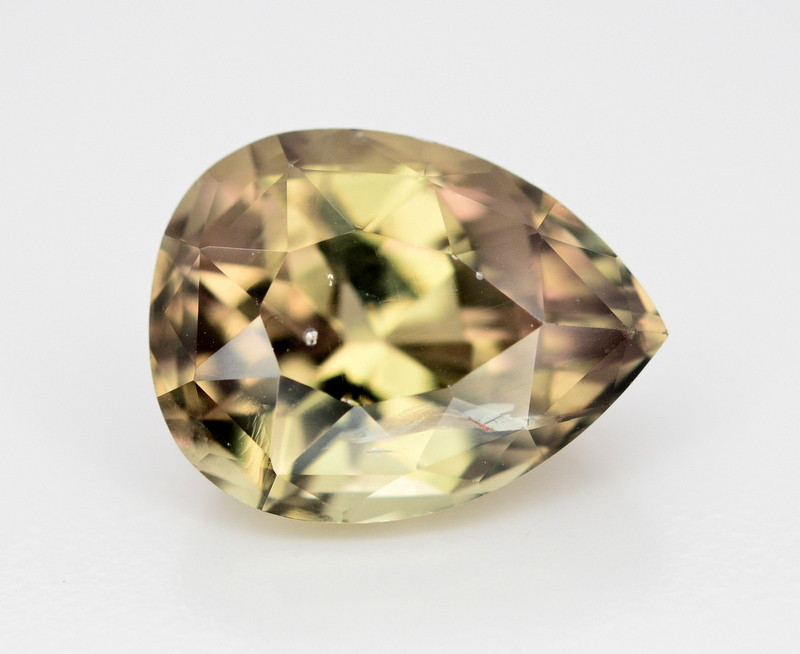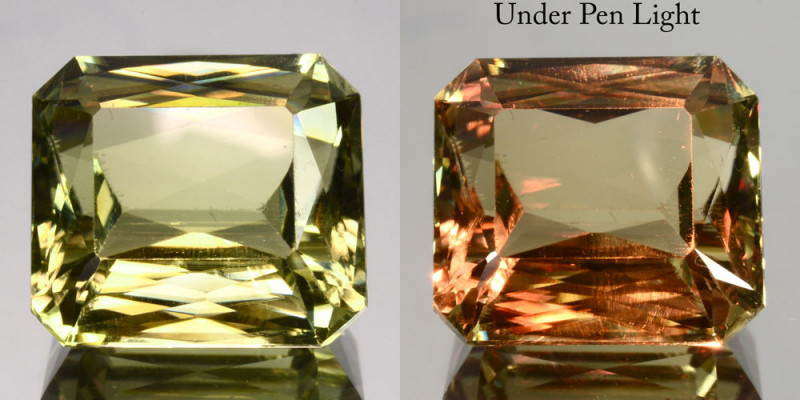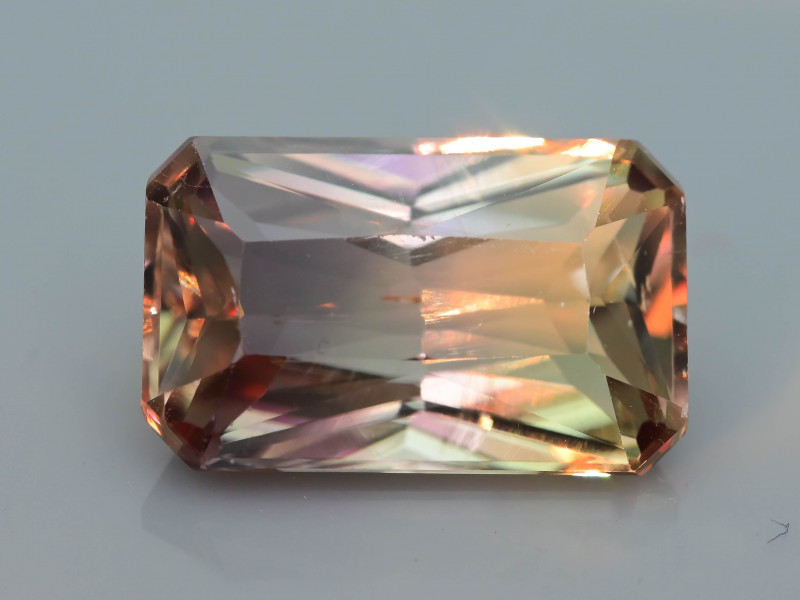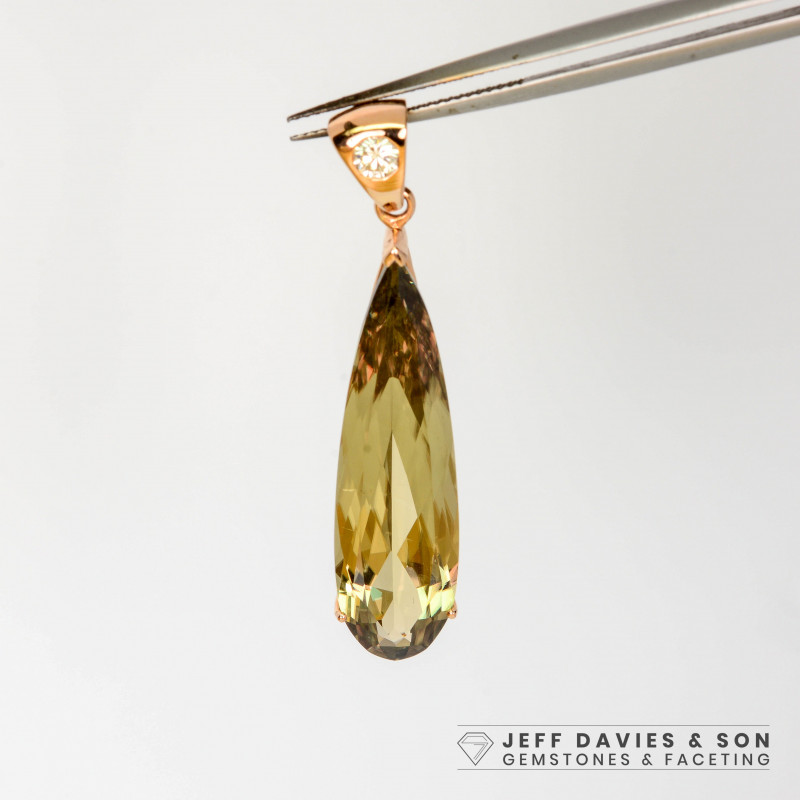
Zultanite Gemstone: Meaning, Benefits, Jewelry & Prices
 Zultanite is a diaspore gemstone that changes colors under different lighting and only comes from one deposit in Turkey. When you first see its beauty, you may wonder: is Zultanite a real gemstone? Yep, Zultanite is a real, naturally occurring gemstone.
Zultanite is a diaspore gemstone that changes colors under different lighting and only comes from one deposit in Turkey. When you first see its beauty, you may wonder: is Zultanite a real gemstone? Yep, Zultanite is a real, naturally occurring gemstone.
Is Zultanite a rare gem? It’s extremely rare, one of the rarest minerals on Earth. Not only does it only come from one country, but it also only forms in a small portion of the Anatolian Mountains.
So, is Zultanite expensive? What special qualities does it possess? In this guide, you’ll learn everything you need to know about Zultanite gemstones, including their value, healing properties, history, and more!

About Zultanite Stone
Zultanite is a semi-precious gemstone that can appear in different shades of pink, yellow, and green. The stone is similar to alexandrite in displaying a natural color change.
Though both alexandrite and Zultanite are pretty pricey, Zultanite is a slightly more affordable alternative at around 5-20 percent of alexandrite’s cost. This means you can substitute Zultanite as a June birthstone!
Not only is it less pricey than alexandrite, Zultanite’s color change has more shades. Alexandrite only shifts in two hues, while Zultanite displays up to four different hues.
As a diaspore, Zultanite also serves as a zodiac stone for Libra, Leo, and Pisces. Speaking of, what’s the difference between Zultanite and diaspore? Let’s clear up any confusion around Zultanite, diaspore, and Csarite.
Zultanite, Csarite and Diaspore
Zultanite may be called a diaspore variety, but it’s technically a trademarked name for color-changing diaspores sourced from Turkey. Turkish diaspore gems have the highest quality of any diaspores.
Besides Zultanite, the name Csarite is also a trademarked trade name for Turkish diaspore gem material. Global Licensing N.V. owns the trademark, so only material mined and sold by their affiliates can be legally listed as Zultanite or Csarite. Other trade names for the stones are “Turkizite” or “Ottomanite,” though these aren’t trademarked.

Zultanite Specifications & Characteristics
Zultanite is an aluminum oxide hydroxide mineral with the formula AlO(OH). Common impurities are iron, manganese, titanium, and chromium. The crystals usually form without good terminations but often with broken or turned ends.
Why does Zultanite change color? Most scientists agree that manganese impurities are the cause of Zultanite’s color change. Internally, the more complicated reason for the color change has to do with light passing through the stone and splitting into different colors.
Not only does Zultanite change colors under different types of lighting (e.g. fluorescent lighting, candlelight, incandescent light), but it’s also pleochroic. That means you’ll see different colors by simply turning the stone to view it at different angles under direct light.
Here’s the remaining mineral data for Zultanite:
Mohs hardness: 6.5-7
Color: Shades of yellow, pink, and green under different lighting
Crystal structure: Orthorhombic
Luster: Vitreous (glassy), pearly on cleavages
Transparency: Translucent to transparent
Refractive index: 1.68-1.75
Density: 3.30-3.539Cleavage: Perfect on [010]; Good on [110]
Fracture: Conchoidal
Streak: White
Luminescence: Sometimes
Pleochroism: Present in gold, green, and pink
Now, what should we know about the Zultanite gemstone's meaning?

Zultanite Meaning & History
Zultanite symbolizes confidence and creativity. Its color-changing properties mean it’s also associated with transformation or rebirth.
Ancient Eastern philosophers wrote lore about diaspore and it’s said that Sultans would wear Zultanite rings. They also reportedly gifted similar rings to their wives and lovers.
If you ever get the chance to visit Zultanite’s locale in the Anatolian Mountains, you’ll see that the area is just as stunning as the gem itself. Named after the ancient Greek term for “sunrise,” these mountains are truly a sight worth visiting.
History
Zultanite’s history revolves around two business partners: American master gem cutter Stephen Kotlowski and Turkish jeweler Murat Akgun. In the mid-1990s, the two started their company Golden Land Trading and put diaspore into the public sphere.
By 2005, Akgun acquired the legal mining rights and financial backing to expand the company into Zultanite Gems LLC. Akgun suggested a trade name that honored the 36 Sultans of the Ottoman Empire (from 1299 to 1923) to set their high-quality gems apart and boost marketing. They went back and forth, from “Ottominite” to “Sultanite” to eventually “Zultanite.”
Zultanite’s popularity rose, and the public gained a commercial supply of diaspore by 2007. Around 2011, Kotlowski faceted the world’s largest Zultanite into a whopping 96-carat gem named “Sultan’s Shield.”
Unfortunately, an era of legal drama followed — ending in Akgun losing rights to the company, the “Zultanite” name, and all the diaspore inventory. Having to start from scratch, Akgun created a new trade name: Csarite. Eventually, both sides resolved their differences, and they remain amicable.
Speaking of healing, what is Zultanite good for in crystal healing?

Zultanite Healing Properties
The color of gemstones can influence their abilities as healing stones. Since Zultanite has multiple colors, it offers numerous healing benefits.
Like pink gemstones, Zultanite can function as a chakra stone for the heart, promoting self-love, compassion, and acceptance. It also can provide grounding, good fortune, and balance like other green gemstones. Plus, Zultanite has the benefits of yellow gems, offering joy and wisdom.
Below, we’ll look at specific physical and emotional Zultanite stone benefits.
Physical Healing
Physically, Zultanite crystals are believed to treat memory disorders like Alzheimers or other forms of dementia. Crystal healers also use Zultanite for dream recall, insomnia, and weight regulation.
Emotional Healing
Zultanite crystals are said to promote mental clarity, helping clear stress, forgetfulness, and distractedness. It’s a focus-boosting and anxiety-reducing crystal often recommended for students, especially during intense studying periods like finals week.
Moving on, how is Zultanite valued?

Zultanite Gemstone Properties
Since authentic Zultanites are regulated by one company, their quality has fairly strict requirements. The grade of an individual Zultanite still depends on the standard categories of color, cut, clarity, and carat weight, along with if it’s authenticated.
Color
The best Zultanite colors are kiwi green under sunlight, champagne yellow under incandescent light, and raspberry red in candlelight. However, you may see other shades like yellow-green, sage, pale golden yellow, purplish-pink, red, khaki green, and even ginger.
The warmer pinks, reds, and violet hues show up in artificial lighting (like fluorescent and incandescent lights), while green and yellow hues come out most under sunlight.
Stones with saturated colors and strong, distinct color shifts are most valuable.
Cut
Lapidarists (gem cutters) who cut Zultanite are highly skilled and cut Zultanite to maximize its color change and sparkle (a.k.a scintillation or brilliance). Virtually every authentic Zultanite is masterfully faceted, with fancy cuts commanding the highest value.

Clarity
Clarity describes the amount of visible inclusions in a gemstone. Rough Zultanite material often has inclusions only visible under 10x magnification, giving it a Type II colored gemstone clarity grade. However, almost all Zultanite gems that are cut and sold are eye-clean, meaning they lack visible inclusions when viewed with the naked eye.
Carat Weight
Unfortunately, most of the material from Zultanite rough must be discarded to yield small gem-quality stones. However, smaller Zultanite stones are usually less saturated and have a less intense color change. Any Zultanites weighing more than 3-5 carats are rare, as most are under 2 carats.
Synthetics & Simulants
With all rare and beautiful gemstones comes a slew of sellers trying to cash in with fake options. But how do you know if a Zultanite stone is real or fake?
If you have a gemology background, you can check the stone’s for inclusions, but most buyers aren’t trained in gemology. Don’t worry! Another way to know if Zultanite is real is with a plastic Zultanite Authenticity Guarantee card. The card has a hologram embedded and lists information about the sourcing and origin of the stone if it’s authentic.
Speaking of, let’s go over how Zultanite forms and where exactly this formation process happens.

Zultanite Formation & Sources
First, where is Zultanite found? Zultanite is currently only known from one vein within the Anatolian Mountains in Turkey, mined thousands of feet above sea level.
Zultanite forms within this hydrothermal vein when magma comes up from below Earth’s surface and cools, with gas bubbles and different cooling rates causing crevices to open up. Hot water carrying dissolved elements entered those crevices, then gradually cooled into Zultanite.
Mining Zultanite is also a tricky process. Typically, miners have to move 2 tons — that’s 4,000 pounds or over 1,800 kilograms — of bauxite (the rock Zultanite forms inside of) to yield 1 carat of gem-quality Zultanite!
All that considered, is Zultanite a good investment? Considering its rarity and limited sourcing, now’s as good a time as any to invest in this stone before the supply depletes. To figure out if it’s the right choice for you, we’ll go over Zultanite prices next.

Zultanite Gemstone Price & Value
Zultanite is a rare, exclusive gem, so it’s fairly steep in price. That said, it’s still less expensive than similar stones like alexandrite.
How much is a 1 carat Zultanite worth? Zultanite changes in price-per-carat by carat weight. The price of a Zultanite stone for sale ranges from $500-$10,000 per carat at retail and $50-$3,000 per carat at wholesale.
Calibrated Csarite gems range from $30-$200 per carat when under 5 cts. Csarite over 5 cts costs $500-$1,000 per carat.
With investment-level costs, gemstone care is crucial for keeping your Zultanite sparkling and intact for a lifetime.
Zultanite Care and Maintenance
There are plenty of different Zultanite jewelry options, and most are durable enough for daily wear. However, we recommend protective settings for more vulnerable jewelry like a Zultanite ring or bracelet.
Be sure to remove any Zultanite jewelry before high-impact or chemically involved activities like washing dishes, cleaning, playing sports, or gardening.
Zultanite is sensitive to sudden temperature changes, so do your best to avoid these. You can clean Zultanite with mild soap, lukewarm water, and a soft toothbrush. It’s best to store Zultanite separately from other gems and away from direct heat or sunlight (to avoid any big temperature changes).

Feel Like A Sultan in Zultanite!
There may not be any Ottoman Empire sultans left, but that doesn’t mean you can’t feel like royalty in a gorgeous Zultanite ring! These rare beauties are truly one-of-a-kind, perfect for any gemstone enthusiast or collector to add to their collection or jewelry repertoire.
Search the Gemstone Encyclopedia
Related Auctions
Related Articles
Originally the Birthstones or gemstones were associated with a zodiac sign or the month of a individuals birth. Find out what your stone is and view the stones we have for sale
8th Feb 2021
There are dozens of quartz and chalcedony gems with various colors and patterns. Learn all about quartz properties and every type of quartz, from amethyst and agate to plasma and phantom quartz!
15th Oct 2020
Hackmanite is a pink to violet sodalite gem known for its unique color-change and luminescence. Learn why hackmanite is special, from its rare qualities to the types of hackmanite jewelry available.
28th Mar 2018
Latest Articles
Catapleiite is a lesser-known mineral and rare gemstone often found as stunning tabular rosettes near other rare stones. Discover the history, prices, benefits, and properties of catapleiite!
28th Apr 2025
Yugawaralite is a rare colorless, white, or pinkish zeolite crystal named for its discovery in Yugawara, Japan. Here we uncover the multifaceted history, properties, prices, and uses of yugawaralite.
24th Mar 2025
Simpsonite is a lesser-known mineral known on the gem market for its durability, yellow-orange color, and rarity. Discover all the properties, uses, prices, and history of simpsonite.
3rd Mar 2025
Article Categories
How To's is where you will find helpful articles from gem Rock Auctions on how to cut gemstones, select gemstones and buy gemstones.
9 Articles





